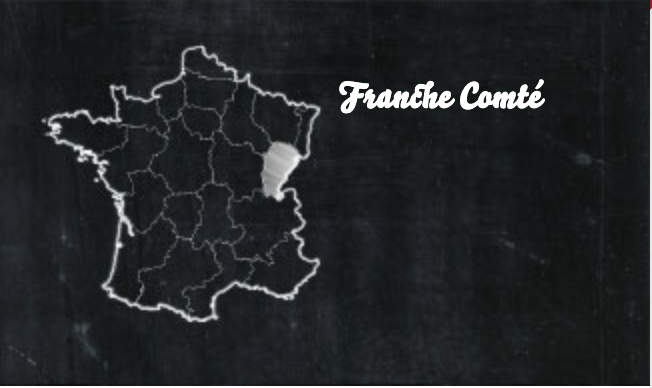They say that the Sequani, who invaded Franche-Comté before the common era, made cheeses that would keep well to get through the winter. The fruit of an ancestral passion, Comté also has a luxuriant nature. This inimitable cheese with a subtle flavour was characterised by a collaborative manufacturing process.
Comté AOC

Origin
Characteristics
– AOC since 1952.
– Part-skim, raw milk, cooked pressed cheese.
– 45% minimum fat content.
– Large cylindrical wheel weighing approximately 40 kg, with convex sides, 55 to 70 cm in diameter, and 9-to-13-cm thick. The cheese is an ivory colour in winter and a buttery yellow colour in the summer and may be scattered with several “eyes” the size of a cherry. There are two types of Comté:
- – “Comté extra”, which is marked with small green bells, meaning a superior quality cheese rated 15 out of 20 by inspectors
- – “Brown Comté” for cheese rated between 12 and 14. All cheeses that are rated below 12/20 may not be called Comté under the AOC. Production: 50,000 tonnes.
Gastronomie
Wines from Jura and champagne enhance Comté’s rich floral and lactic nuances. Comté lends itself to many culinary uses (with red fruits or pears, in salads, in appetisers). It is the primary ingredient of the famous fondue comptoise, a creamy mixture of Comté, dry white wine from the Jura region, and kirsch.
Production
The milk is poured into a copper vat, rennetted, and then the curd that is obtained is cut and heated (which is why the curd is said to have been cooked). Comté is a cheese that keeps well. It is aged for at least four months and sometimes more than two years, during which time it is regularly rubbed and turned. Ripeners fiercely guard the secret of the perfect temperature to promote the development of the cheese’s fruity flavour. The importance of copper should be noted, as it permits superior heat conduction throughout the vat.
Montbeliarde cows feed on a wide range of flora with many flavours, which gives the milk a unique taste. Fruitières (literally “fruit trees”), cooperatives where the milk “bore fruit”, appeared in the 13th century out of the necessity for milk producers to make cheese together. Approximately 400 litres of milk, i.e., the daily output of 25 cows, are needed to produce a single 40 kg-wheel.
Production Area
Comté is from the high plateau region of the Jura mountains and Franche-Comté (the Doubs, Jura, Haute-Saône, and Ain departments). The region is characterised by mountains with a harsh winter climate and plentiful rains in the spring and autumn.